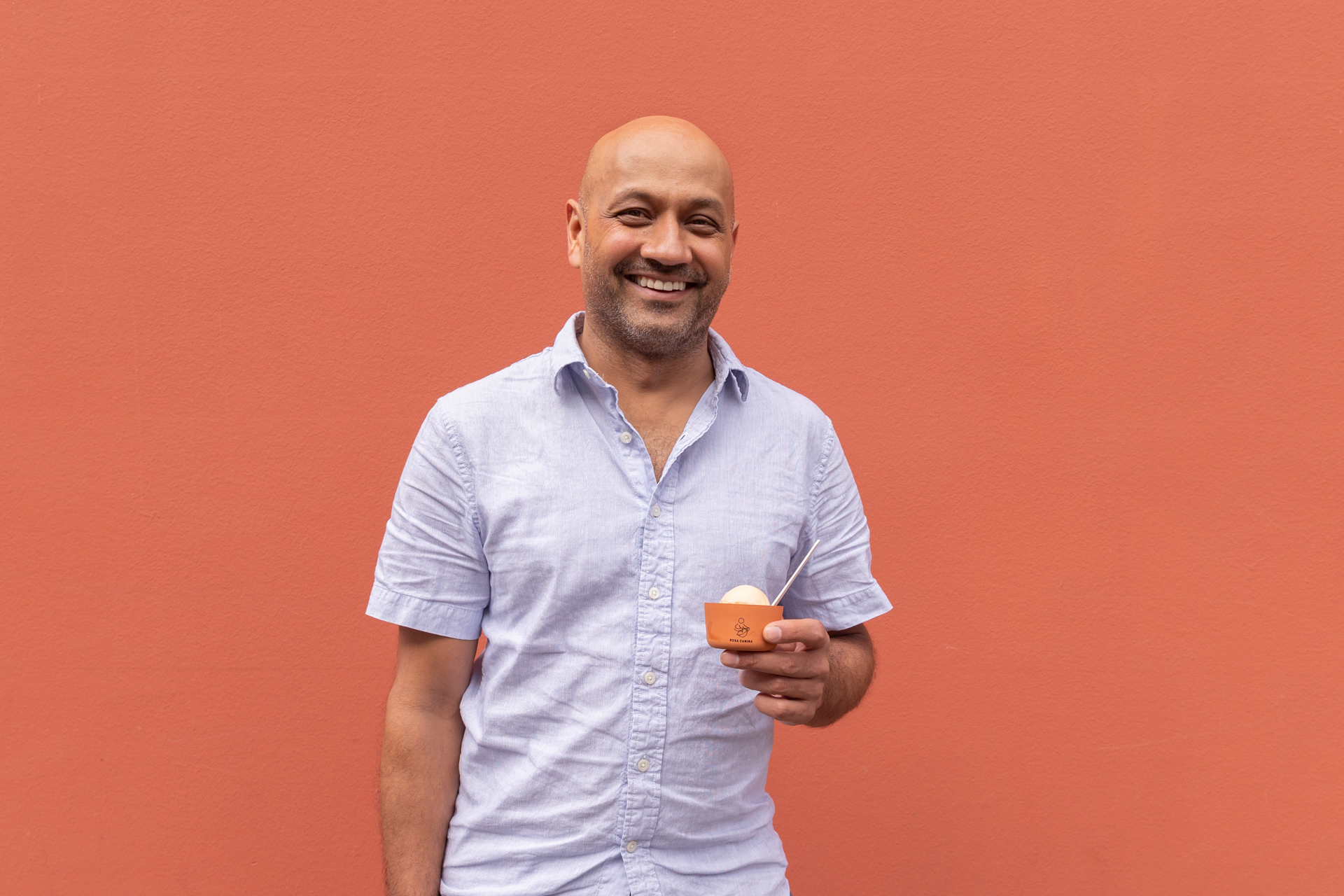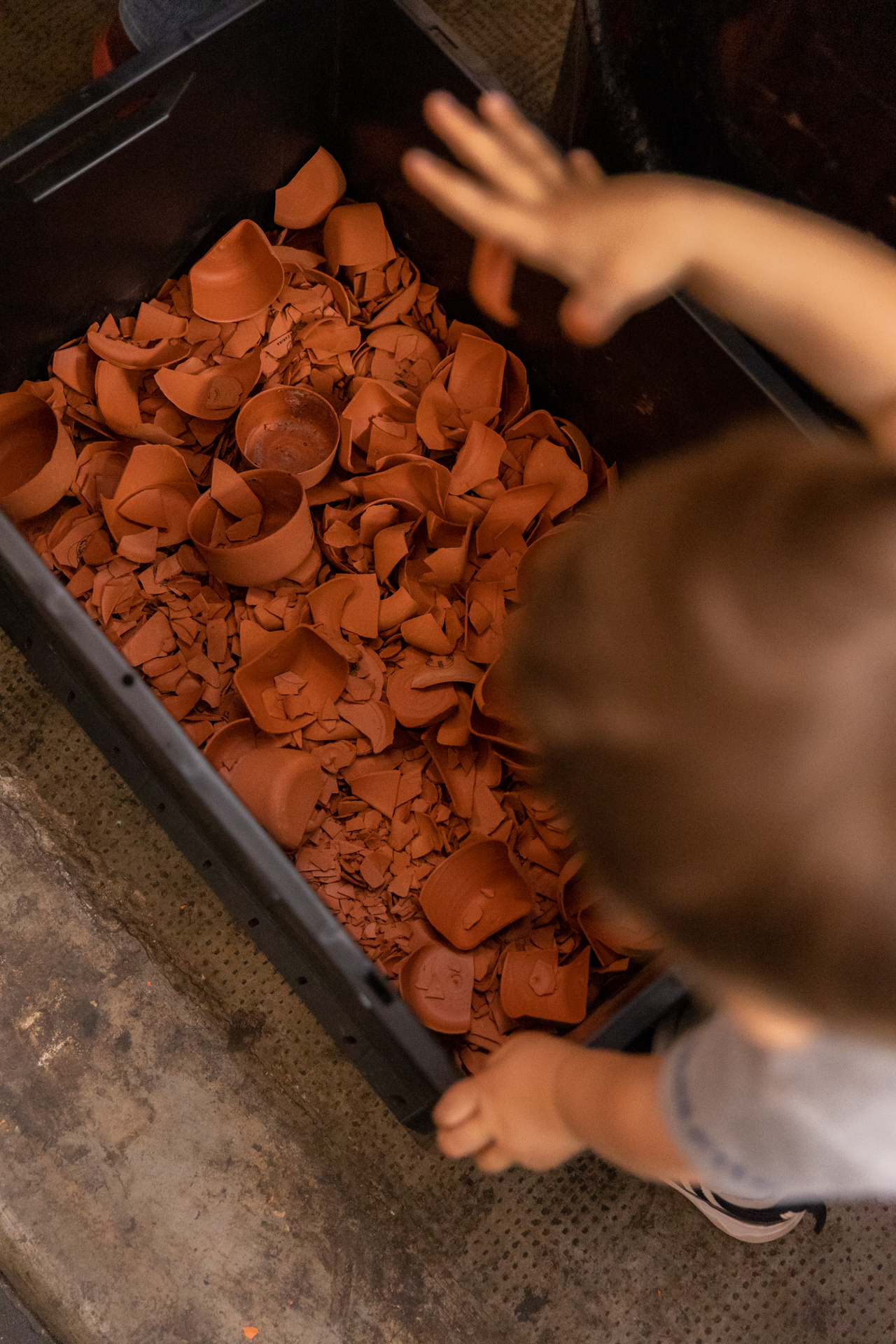San Francisco and Berlin based tech company GaeaStar, creates ultra-thin clay food containers to break our dependency on single-use plastic. Developed via 3D printing and made of only three simple ingredients – clay, water, and salt – the cups and bowls are ‘geoneutral,’ meaning they come from natural earthbound materials and leave behind zero harmful waste. Founder Sanjeev Mankotia, shares his vision and roadmap for the future.
In 2021 alone, the global population generated over 40 million metric tons of plastic, yet only nine percent of all plastic ever made has been recycled. The rest ends up in landfills, our oceans and incinerators. GaeaStar’s ceramic cups make the act of recycling obsolete. Users can discard the eggshell thin clay vessels in the normal trash bin or smash them on the ground, where they eventually turn to dust. Inspired by the 5,000-year-old practice in India of using clay cups, GaeaStar presents a modern-day twist on this ancient Indian tradition of drinking from disposable clay cups that can be tossed without environmental harm. In combining this cultural practice with 21st-century technology, the company has created a viable fix for the single-use waste problem.

Threefold inspiration
Mankotia explains where he got the inspiration for starting his business: “I’m Indian by heritage. About a decade ago, I was traveling back home and strolling down the streets with one of my cousins. She approached a local tea vendor, got her tea served in a crudely made terracotta cup, drank it, and then threw the cup on the ground. I was shocked, asking her why she was deliberately littering the streets. Her response was that I did not need to bother, as it was made out of dirt. This experience stayed with me and expanded my thinking. This practice of using dirt and other natural earthbound materials has been done for thousands of years in India, and many other cultures around the world. It is a very original, eco-friendly disposable.”
“A second observation that I made is that these clay cups are often made by local families, mostly from very humble backgrounds. They get the clay from the riverbanks and carry it home on their heads. They make the cups without any electricity, and then spin the clay, quickly forming them into cups, dry them in the sun, and then bake them on a woodfire. It's a very basic process. The cups sell for close to nothing, but still, these families were making just enough margin to live on. It made me realize that if we could scale this process, using automation, we should be able to produce a viable alternative for single-use plastics. I was convinced that the economics would work.”
“Then when we were actually in the process of thinking about prototypes, I got inspiration from Mother Nature. An eggshell is sort of the perfect packaging: it's super thin and structurally very strong. The goal became to create an eggshell-thin clay cup that once used can easily be disposed of, causing no harm to the environment, even if you would throw it on the ground and leave it be.”
Creating a new category
“My former background as a mechanical engineer came in handy. As I researched possible techniques and solutions, I came to the conclusion that additive manufacturing, commonly known as 3D printing, was the best way forward. I had been working with 3D printers when the technique was just emerging. After being an engineer, I went into finance. For 20 years, I’ve worked in banking and management consulting. But as I was looking to pivot my career, I decided it was time to pursue the solution for this big idea that was with me for so long. That’s when, in 2021, we started GaeaStar.”
“When you look at it, we haven't really invented anything. It's an ancient way of working. The only thing we're doing is using a particular manufacturing process to create the superthin structure. The cups are not biodegradable; they are made of clay and disintegrate under mechanical force. Because they are so thin, the product will easily break down if you throw it in the regular garbage. Even if it was thrown on the ground, people would just step on it, and it would turn to dust.”
“With our cups we have created a whole new category in the food industry. Usually, you would have your single-use plastic cup, costing just a few cents, that you throw away after using it. And then you have this ceramic mug that costs several dollars and lasts for years. There was nothing in the middle. We now have created a unique vessel, providing a fine china experience with the convenience of disposability.

Three natural ingredients
“The product is made out of just three natural ingredients, with the most important one being clay. Right now we use terracotta. We buy it from a large manufacturer that makes sure it’s food safe. But basically, if you were to go into your backyard and dig a little bit, maybe one or two meters, you'll get some form of clay. People just don't realize how much we use clay in our lives. It's in our roof tiles. It's in bricks.”
“From the beginning, the whole idea was that in every step of the production process, we try to be very stingy. We want to use less water, less energy, and less carbon. That’s why we produce locally, using only local materials, resources, and labor. Right now we can make these vessels in our own little hub-and-spoke microfactory with our custom-built 3D printer. Conventional 3D printers can print every imaginable shape, making them infinitely flexible and also very slow. Creating just one cup could take up to maybe three or four hours. We just wanted to use simple additive techniques to make a small range of similarly round-shaped vessels, whether it's a plate or a bowl or a cup. So we decided to make our own 3D printing machine. Now, we can make a cup in its green state in less than 30 seconds.”
Future vision
“Our vision is that one day, a viable countertop version of our 3D printer will sit in restaurants or coffee shops and will print cups, plates and bowls on-site, on demand. But we’re still many years away from that. Our current hub-and-spoke business model is here to help us get to that point. Ultimately we don't want to be a cup manufacturer; we are an engineering company that makes the machine. The idea is that we will lease the machine to our customers, and supply the cartridges on a subscription-based model, with the right clay mixture that fits the local profile. The customer gets a plug-and-play solution.”
“We could have chosen to stay in the R&D phase until we have this countertop available, but for us, it was important to engage our potential customer base right from the beginning. This is a new use case for this material and a new way of delivering it, so we needed the commitment at an early stage. So, while we were still testing and developing, we created sample products that, even though they were test batches, were very nice in finish and of good quality. We decided to give them away to some potential curated foodservice customers to see how they and their guests would like it. It was a big success, and the customers came back and asked for more, and were even willing to pay for a not-yet-perfect product. That's basically how it started. We currently run two hubs, one in Berlin and one in San Francisco. Our microfactory in Berlin now covers a 20-kilometer radius, where we source the raw materials, make the product, and deliver it to our customers. It’s kind of a ghost kitchen model, where one location produces for multiple users. The difference being instead of making food, we're making cups.”
“If you look at the end-to-end ‘system’ of a traditional incumbent, a single-use plastic cup, from synthesizing plastic and paper all the way to the landfill after use, you will find an extremely dirty process. People have no idea how much waste, energy and pollution is involved. It’s so much more than just the cup. It takes hundreds of years for a plastic cup to completely break down - with the result being the ongoing existence of microplastics. Hundreds of years of garbage for ten minutes of convenience. There's a design issue here: the life cycle and use cycle are completely mismatched. If you would apply the same rubric to our ‘system,’ we believe you will find it to be much smaller. We are currently in the process of a life cycle assessment that is third party reviewed, which will allow us to back this up with hard data.”
Develop as we go
“Since the start, we have gotten a lot of interest from potential customers ready to buy. From a product-market fit, it is hitting a 10 out of 10. But as our production capabilities are not that big yet, and so locally oriented, with only two hubs operational, we are prioritizing to get those early adopters on board, with whom we can work in co-creation. For example, we currently don't have a good lid solution yet. There's a lot of logistics associated with that, so we're working with our partners to figure this out. The partnership means that customers commit both their time and money. We are far from flawless yet. Sometimes we deliver our cups and discover that they don't stack properly. We're still figuring all those things out. The key, however, is that the user experience is superb. People love it. So there's value in that. People don't look at it as a commodity. It enhances the guest experience.”
“We now focus on mid-sized companies – ideally with 10 to 20 retail outlets – that are intrinsically motivated for our product with whom we can develop it to the next level. You can think of third wave specialty coffee bars or premium ice cream shops that are particularly interested in our ceramic containers. These concepts take real pride in the products that they create. It’s these kinds of premium brands that understand the value right away. In San Francisco, where we operate our second micro-production site, we've also gotten significant interest from large tech companies. These companies usually have state-of-the-art in-house cafes and a user base that is rather eco-conscious, and we see that this type of innovation is warmly welcomed.”
True cost
“Our end goal is to create a truly sustainable locally sourced disposable, at the lowest possible price point. In raw material costs, we are already cheaper than the incumbent. Clay is dirt cheap. But today we still have a lot of investments in research and engineering that are needed. At the same time, as an industry and as a society, we need to take a step back and consider the true costs of the products we use. It’s just some 50 years ago that we got used to plastic. In recent years, people seem to have forgotten about their basic guiding principles, like take no more than you use, or don’t cause harm. Ultimately, customers need to demand better, more sustainable products to make industries shift. Ten cents for a single-use plastic cup is not the true price. It might be the trade price, but society is paying a massive price in pollution and irreversible damage to biodiversity and health. We believe that at scale, we could become cheaper than the incumbent while at the same time offering a sustainable product and improved user experience. In this way, everybody wins.”